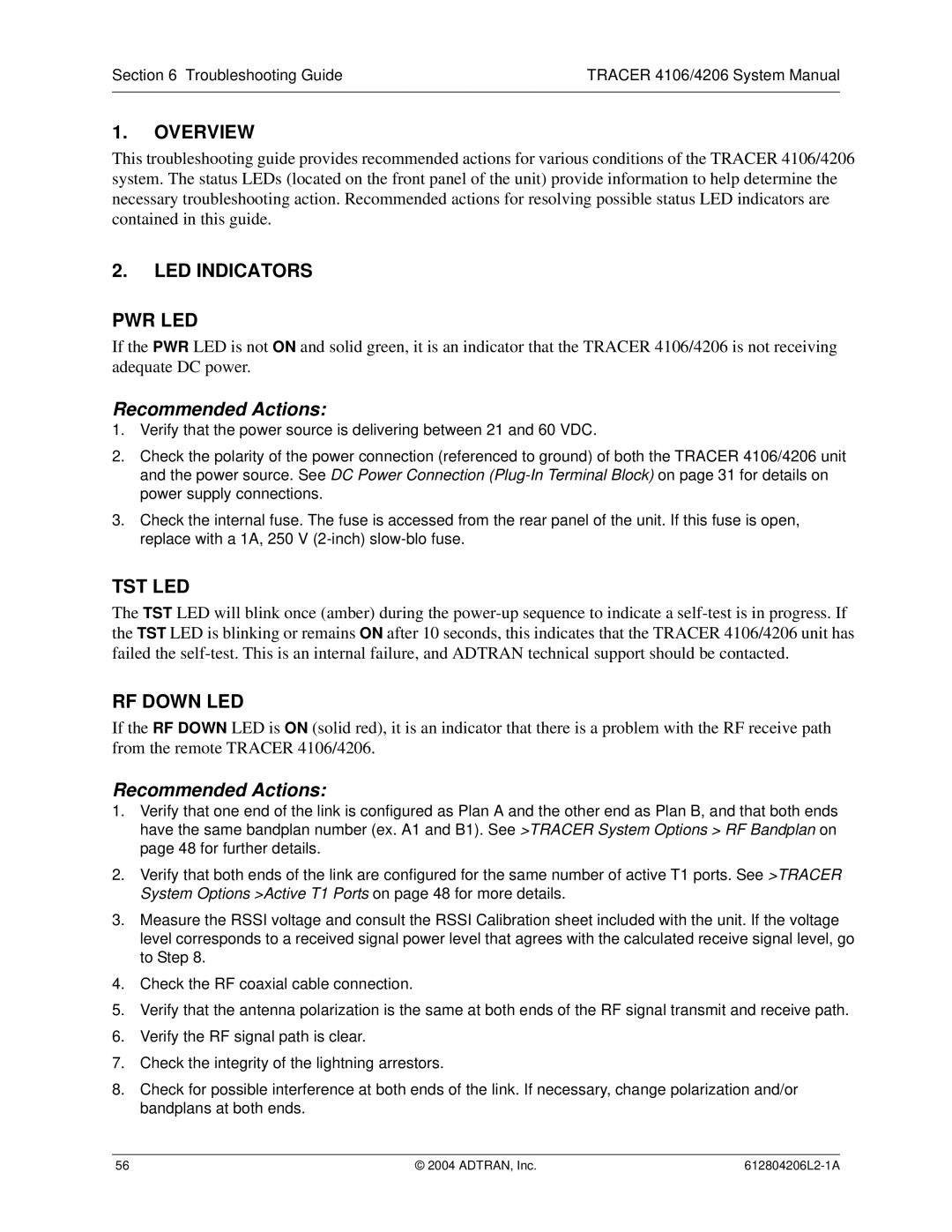Section 6 Troubleshooting Guide | TRACER 4106/4206 System Manual |
|
|
1.OVERVIEW
This troubleshooting guide provides recommended actions for various conditions of the TRACER 4106/4206 system. The status LEDs (located on the front panel of the unit) provide information to help determine the necessary troubleshooting action. Recommended actions for resolving possible status LED indicators are contained in this guide.
2.LED INDICATORS
PWR LED
If the PWR LED is not ON and solid green, it is an indicator that the TRACER 4106/4206 is not receiving adequate DC power.
Recommended Actions:
1.Verify that the power source is delivering between 21 and 60 VDC.
2.Check the polarity of the power connection (referenced to ground) of both the TRACER 4106/4206 unit and the power source. See DC Power Connection
3.Check the internal fuse. The fuse is accessed from the rear panel of the unit. If this fuse is open, replace with a 1A, 250 V
TST LED
The TST LED will blink once (amber) during the
RF DOWN LED
If the RF DOWN LED is ON (solid red), it is an indicator that there is a problem with the RF receive path from the remote TRACER 4106/4206.
Recommended Actions:
1.Verify that one end of the link is configured as Plan A and the other end as Plan B, and that both ends have the same bandplan number (ex. A1 and B1). See >TRACER System Options > RF Bandplan on page 48 for further details.
2.Verify that both ends of the link are configured for the same number of active T1 ports. See >TRACER System Options >Active T1 Ports on page 48 for more details.
3.Measure the RSSI voltage and consult the RSSI Calibration sheet included with the unit. If the voltage level corresponds to a received signal power level that agrees with the calculated receive signal level, go to Step 8.
4.Check the RF coaxial cable connection.
5.Verify that the antenna polarization is the same at both ends of the RF signal transmit and receive path.
6.Verify the RF signal path is clear.
7.Check the integrity of the lightning arrestors.
8.Check for possible interference at both ends of the link. If necessary, change polarization and/or bandplans at both ends.
56 | © 2004 ADTRAN, Inc. |
